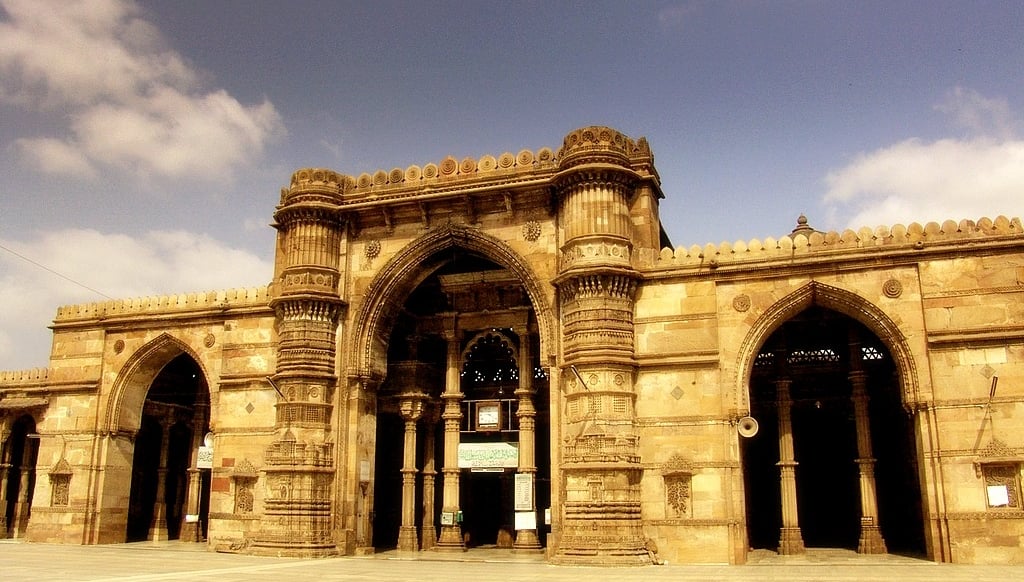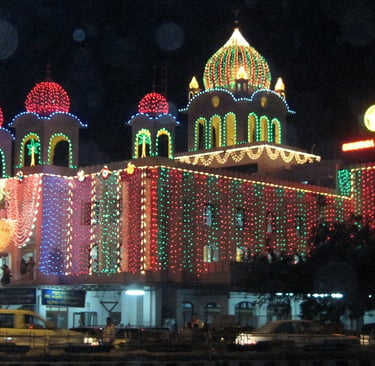Ahmedabad – Threads of Time
Step into Ahmedabad, where centuries of craftsmanship, culture, and heritage weave together a timeless Indian experience
DESTINATIONS
Jetsclusive
6/24/20254 min read


Ahmedabad – Threads of Time
Ahmedabad, India's first UNESCO World Heritage City, is a living mosaic of centuries-old heritage and vibrant innovation. Known for its pivotal role in India's textile industry, its walled neighborhoods called pols, and its enduring spirit, Ahmedabad tells a story at every turn. This is a city where medieval architecture stands beside bustling markets, Gandhi’s legacy inspires daily life, and each festival splashes the streets with color.
A Tapestry of Heritage: History and Culture of Ahmedabad
Step into Ahmedabad and feel time shift beneath your feet. The city is a masterpiece of history, blending stone, faith and tradition across its urban canvas.
Medieval Beginnings: From Ashaval to Ahmed Shah
Long before it became a metropolis, the land along the Sabarmati River was home to the Bhil tribes and early settlements known as Ashaval. In 1411, Sultan Ahmed Shah founded Ahmedabad, encircling his new city with formidable walls and strong gates. The layout was ahead of its time: winding streets, communal spaces, and fortified neighborhoods that created a sense of both community and security.
The walled city, with its carved havelis and secret bylanes, stands today as proof of old-world ingenuity. Each pol (gated cluster of homes) was built to unite families and protect residents, forging a culture of unity and mutual care.
Cultural Confluence: Architecture, Religion, and Festivals
Ahmedabad reflects an intricate pattern of influences. Temples adorned with mythological carvings sit close to grand mosques like Jama Masjid, famed for its 260 pillars and fusion of Hindu, Jain, and Islamic styles. The poetic latticework in Sidi Saiyyed Mosque, known as the 'Tree of Life', draws admirers from around the world.
The pols themselves, with their colorful facades, bird feeders (chabutras), and shared courtyards, paint a vivid portrait of daily life that bridges faiths and families. Here, Hindu, Jain, and Islamic celebrations light up the calendar, from the energetic Garba dances during Navratri, to the blue skies of Uttarayan filled with soaring kites. The spirit of inclusion is stitched into the city’s every festival.
Compare Private Jet Pricing to Ahmedabad Here Powered by Villiers Jets — Trusted by 1,000+ flyers worldwide
Ahmedabad in Independence and Beyond
Mahatma Gandhi made Ahmedabad his home, founding both Kochrab and Sabarmati Ashrams along the riverbanks. The Sabarmati Ashram, now a peaceful pilgrimage site, once served as the beating heart of India’s struggle for freedom. Here, plans for the historic Dandi Salt March unfolded, changing the course of history.
After independence, Ahmedabad shook off its sleepy image, morphing into a thriving industrial, educational and cultural hub. Yet, the city stays grounded in its heritage, cherishing its past even as new ideas and industries take root.
Landmarks of Legacy: Exploring Ahmedabad’s Iconic Sites
The city offers a walking timeline of India’s story. Each landmark is a thread connecting Ahmedabad’s storied past to its animated present.
Architectural Marvels: Forts, Mosques, and Stepwells
Picture yourself looking up at the imposing Bhadra Fort, centerpiece of the old city. Within its historic walls stand royal palaces, ancient gates, and the stately Teen Darwaza. The Jama Masjid, with its grand courtyard and brilliant yellow sandstone, still welcomes worshippers after almost seven centuries.
Admire the delicate stone screens at Sidi Saiyyed Mosque, whose artistry rivals Europe's best cathedrals. Descend into Adalaj Stepwell, where arched pavilions and geometric patterns tell stories of devotion and resilience. The city’s Jain temples, like the Hutheesing Jain Temple, stun visitors with their marble detail and serene ambiance.
Sabarmati Ashram and Modern Memorials
The Sabarmati Ashram is a silent storyteller on the river’s edge. Gandhi’s humble quarters, libraries, and spinning wheels are preserved here, inviting visitors to reflect on the power of peaceful protest. Museums in the city, such as the Gandhi Memorial Museum and Sardar Vallabhbhai Patel National Memorial, offer insight into the dreams and sacrifices that built modern India.
Cultural Bazaars and Riverfront Renaissance
No visit to Ahmedabad is complete without a trip to its bustling bazaars. Manek Chowk transforms as the sun sets, from a jewelry market to a street food paradise. The textile stalls of Rani-no-Haziro and the handicraft haven of Law Garden brim with color and creativity.
The Sabarmati Riverfront glitters at dusk, its promenades, gardens, and cycling tracks reviving an ancient waterway. The modern Atal Bridge, with its artistic curves and LED lights, stands as a proud gateway to the city’s renewed energy.
Textile City: Weaving Traditions and Innovations
Ahmedabad spins together artistry, commerce and imagination. Its legacy as the “Manchester of India” was not sewn overnight.
Compare Private Jet Pricing to Ahmedabad Here Powered by Villiers Jets — Trusted by 1,000+ flyers worldwide
Roots of Cotton: Early Textile Traditions
Ahmedabad’s connection to cotton stretches back to the Mughal era, when merchants traded fine hand-spun fabrics across Asia and beyond. The Satlada, or seven-layered muslin, became the fabric of choice in royal courts. Riverbanks and a dry climate created perfect conditions for cotton cultivation, making the city a hub of textile expertise.
Industrial Boom and Modernization
In the 19th century, enterprising families like the Lalbhais and Sarabhais launched textile mills that changed the city’s rhythm. The clang of looms echoed across Ahmedabad, drawing workers from rural Gujarat and fueling a sense of urban pride.
Gandhian ideals influenced management and labor relations, giving rise to innovative cooperatives and fair working conditions. New machinery and global trade links kept the industry humming through wars and economic shifts, keeping Ahmedabad woven into the global fabric trade.
Sustainability, Export, and Global Footprint
Today, Ahmedabad is not just preserving tradition. It leads with sustainable fabric production, investing in eco-friendly dyes, organic cotton, and cutting-edge textile research. The city’s exports, including vibrant saris, home textiles, and yarn, find markets across continents.
Institutions like the National Institute of Design foster a spirit of innovation, while craft cooperatives keep age-old loom skills alive. Ahmedabad’s textiles now carry a stamp of both quality and conscience, balancing heritage with responsibility.
Conclusion
Ahmedabad never forgets where it came from, yet it’s always looking for the next story. In its lanes, you’ll hear echoes of sultans, saints, freedom fighters, and entrepreneurs. Every brick and byline testifies to a city that spins tradition and innovation together—tight as threads in the finest khadi.
Walk its riverbanks at sunrise, wander the pols at dusk, get swept up in a festival, and feel how Ahmedabad’s tapestry welcomes everyone. If you’re searching for a city where history isn’t static but woven into every day, Ahmedabad is ready to share its threads of time.


Luxury
Explore the world of private aviation and travel.
support@jetsclusive.net
© 2025. All rights reserved.
